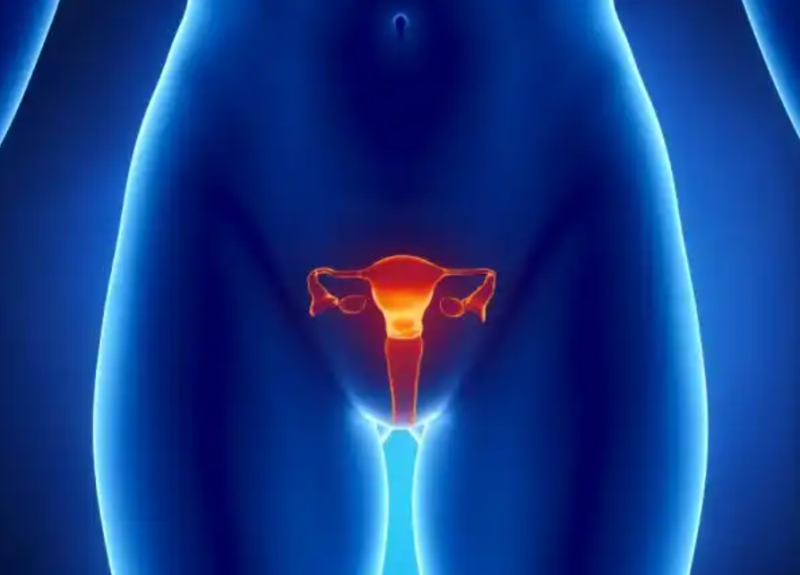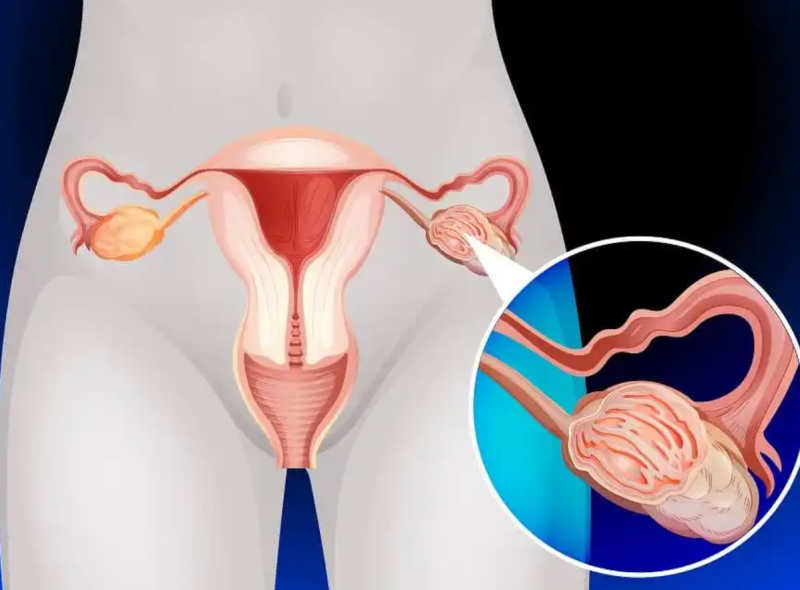
The female reproductive system can present a wide variety of diseases and imbalances. Among those are punctures in the ovaries, which can appear for different reasons.
In addition, these punctures can present themselves in different ways for each woman. They can vary in intensity, time, and month date and then disappear spontaneously. Keep reading, and you will find the answers you were looking for.
Contents
Pricks in the ovaries
The pain in the ovaries is usually stabbing or cramping and is located in the lower abdomen, just on the side of the affected ovary. On some occasions, the pain can be so intense that it is perceived in the lumbar region. The duration of the symptom can vary depending on the condition and is anywhere from a few minutes to 48 hours.
Ovarian punctures can be accompanied by other local or systemic symptoms, depending on the condition causing it. First, it is possible to observe changes in vaginal discharge and breast pain, bloating, fever, or vaginal bleeding.
Reasons why punctures are felt in the ovaries
The causes vary, from simple menstrual discomfort to severe diseases like cancer. In this sense, among the leading reasons for punctures in the ovaries, the following stand out:

1. Ovulation processes
Women can experience pinpricks from the middle of the ovulation cycle. In this case, the symptom is called intermenstrual pelvic pain, and the punctures are located in the lower abdomen on one side only, although it can occur in both ovaries.
Its appearance is due to the growth of the follicles that are inside the ovaries. This significantly influences their surface and causes them to become irritated and inflamed. In general, they are temporary pains and should not worry us.
Another reason intermenstrual pelvic pain may appear is the release of the mature follicle. This event causes a small amount of blood and fluid to be spilled, which increases abdominal distension and causes discomfort.
2. The menstrual cycle
In general, when a woman is in her menstrual cycle, she usually presents with menstrual cramps. These cramps can cause frequent punctures in the ovaries.
The cause of this symptom has to do with the reproductive system, which is inflamed and pressed. This causes punctures until the inflammation begins to subside.
In addition, the uterus has contractions due to increased concentration of a substance called prostaglandin. This substance will promote vasoconstriction and contraction of the uterine smooth muscle, generating the characteristic pain of menstruation.
3. Pregnancy
Women often experience aching, cramping, or pain during the first few weeks of pregnancy. This is due to your body’s hormonal changes when preparing for pregnancy.
In this case, it is vitally important to pay attention to punctures. These can endanger the health of the woman and the pregnancy. Or not letting the fetus develop properly.
On the other hand, there is the possibility of presenting an ectopic pregnancy, a pathology in which the embryo implants and grows outside the uterus. Ectopic pregnancies can cause extreme cramp-like pain in the ovaries and pelvis. They are also accompanied by vaginal bleeding, nausea, or dizziness.
4. Cysts on the ovaries

Fourth, another possible cause of punctures is polycystic ovaries. This disorder is based on imbalances in female sex hormones that cause high levels of androgens in women.
This disease generates cysts in the ovaries and absent or very irregular menstruation. For this reason, many women with polycystic ovaries tend to feel punctures in the ovaries. This is because the woman’s mature eggs are not released naturally.
For its part, the structures of the female reproductive system can present various benign tumors that produce symptoms similar to punctures in the ovaries, especially during menstruation. Among the tumors that can generate this condition, uterine fibroids, and polyps stand out.
5. Endometriosis
We can also refer to endometriosis. In this case, the pain is localized in the ovaries or the lower abdomen.
In this pathology, endometrial cells grow outside the uterus. This can lead to small bleeding lumps forming and cause constant punctures in the ovaries. Other symptoms of endometriosis can include painful intercourse, painful urination or bowel movements, excessive bleeding, nausea, vomiting, and prolonged tiredness.
However, since these symptoms can appear due to other conditions, it is necessary to request some diagnostic tests. The professional may suggest a pelvic exam, an ultrasound, or an MRI.6. Pelvic inflammatory disease
 Pelvic inflammatory disease is an infection.
Pelvic inflammatory disease is an infection.
This condition can affect women of all ages. However, it is much more common in young women or women of reproductive age. Unfortunately, it is a reasonably severe pathology, which must be treated immediately if possible complications such as infertility are to be avoided.
7. Ovarian cancer
This malignant pathology can generate punctures in the ovaries as a symptom. It also causes enlarged ovaries, abdominal swelling, and pelvic pain.
How do we alleviate pain?
Despite being painful, punctures can be quickly relieved if you follow these tips:
1. Avoid coffee
Coffee makes our stress levels rise. Its consumption causes constriction of blood vessels and generates pressure and inflammation in the ovaries. This process makes possible the appearance of punctures. Therefore, you should avoid drinking coffee if you suffer from them often.
2. Medications
There are two types of medications that we must take into account:
- Analgesics will help you alleviate the pain caused by the punctures. However, we recommend contacting a doctor to recommend the perfect pain reliever.
- Oral contraceptives: especially for those women who suffer from polycystic ovaries. Oral contraceptives are capable of controlling imbalances of female sex hormones. It must be a gynecologist who prescribes them.
3. The tea

Drinking chamomile tea and infusions will help you reduce the pain caused by punctures in the ovaries. However, we must not forget that it can be a symptom of another health problem.
4. Apply warm compresses to the area
Applying heat to the abdomen with compresses or hot packs can help relieve referred pain effectively. It is believed that these compresses help reduce inflammation so the distension of the organ disappears and, with it, the pain.
When to go to the doctor?
In most cases, ovarian punctures are related to ovulation, so they are not a cause for concern. However, specific symptoms can accompany the pain and are an alert sign, among which the following stand out:
- Pelvic pain that is not related to menstruation.
- Unexplained changes in menstrual patterns.
- Absence of menses for at least three months.
- Changes in the smell or color of vaginal discharge.
- Hair loss.
- hirsutism _
- Sudden onset pain, intense and uncontrollable.
An uncomfortable symptom that may require medical attention
Punctures in the ovaries can appear for multiple reasons. In most cases, they occur through normal processes during menstruation or ovulation. However, they can be due to severe pathologies such as pelvic inflammatory disease. For this reason, we recommend you go to the gynecologist regularly so that you can rule out any infection.